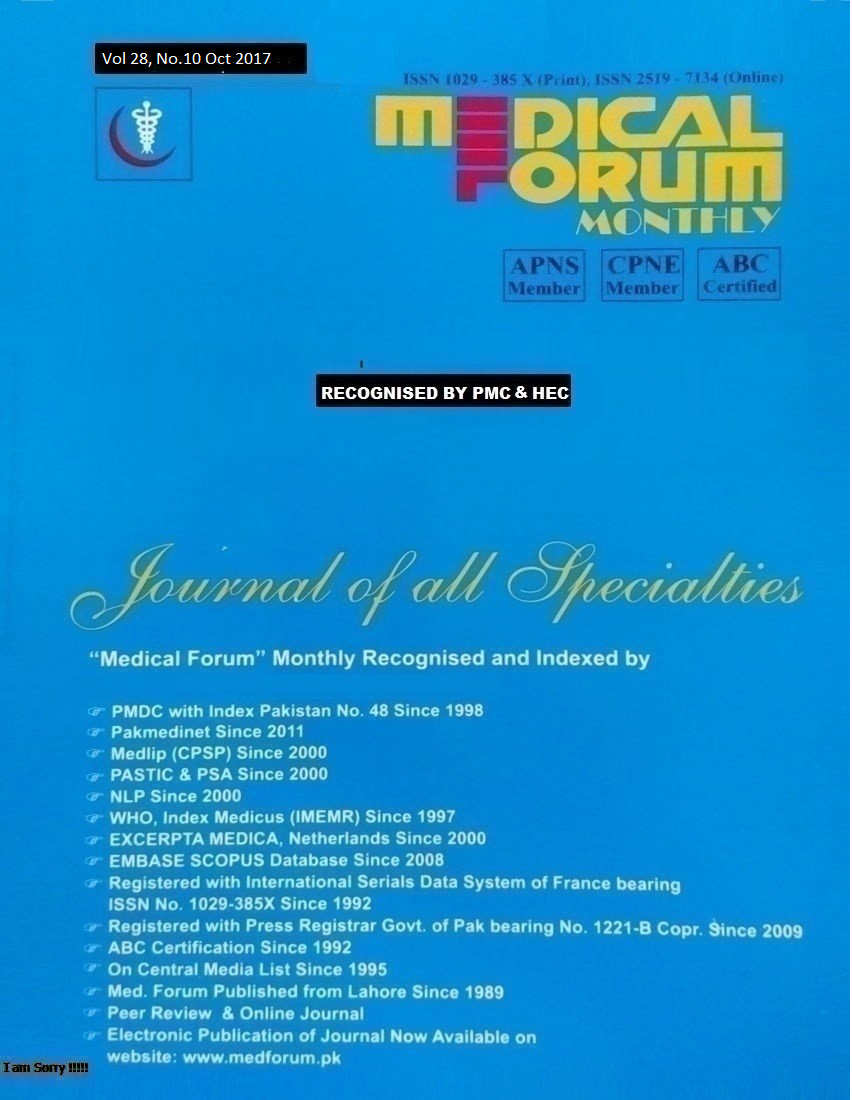
1. Positive Sentinel Lymph Node Biopsy in Breast Cancer Related to Tumor Characteristics - An Experience at Tertiary Care Hospital
Muhammad Saleem Shaikh, Muharram Ali and Kheo Ram Dholia
ABSTRACT
Objective: To assess the accuracy of sentinel lymph node biopsy in breast cancer, therefore, reducing the morbidity of axillary clearance in patients having clinically impalpable axillary lymphnodes. Study Design: A Prospective study
Place and Duration of Study: This study was conducted at the Department of Surgery, Unit II, Chandka Medical College / Hospital, Larkana from January 2014 to December 2016.
Materials and Methods: All cases having histopathologically evidenced breast carcinoma with clinically no palpable axillary lymph nodes were included. In our study patients having clinically palpable lymph nodes, past history of ipsilateral breast operation, stage III& IV disease were excluded.
All patients underwent sentinel lymph node sampling before taking informed and written consent. In operation theatre, under general anesthesia, 2ml of a basic thiazine dye (Methylene Blue) infiltrated around primary breast lesion then applied manual rubbing technique for 2minutes over the area. Surgical procedure of Simple mastectomy and sentinel lymph node biopsy performed after 30 minutes of infiltrating dye.
Results: Sixty patients after fulfilling the inclusion criteria were enrolled with mean age of46 years ±12 years. Two third of patients had right breast involvement and most of the patients presented with Intra ductal carcinoma (71.1%) and had estrogen receptor +/- progesterone receptor positive disease (55%).
Simple mastectomy with sentinel lymph node axillary sampling was performed. Majority of patients were in early T disease (T1 42%, T2 38%), while most of the patients had well and moderately differentiated gradetumors (88%). Sentinel node sampling revealed 35 cases positive, while 25 cases were negative. It has been observed that patients with sentinel node positivity had higher grades of disease and also more advanced T stage.
Conclusion: Infiltrating a dye is technically simple and reliable to detect a sentinel node in majority of cases. It is observed that this technique is more accurate in high grade and higher T stage tumors in breast cancer. Key Words: Carcinoma breast, axillary sampling, sentinel node biopsy.
Citation of articles: Shaikh MS, Ali M, Dholia KR. Positive Sentinel Lymph Node Biopsy in Breast Cancer Related to Tumor Characteristics - An Experience at Tertiary Care Hospital. Med Forum 2017;28(10):2-6.
